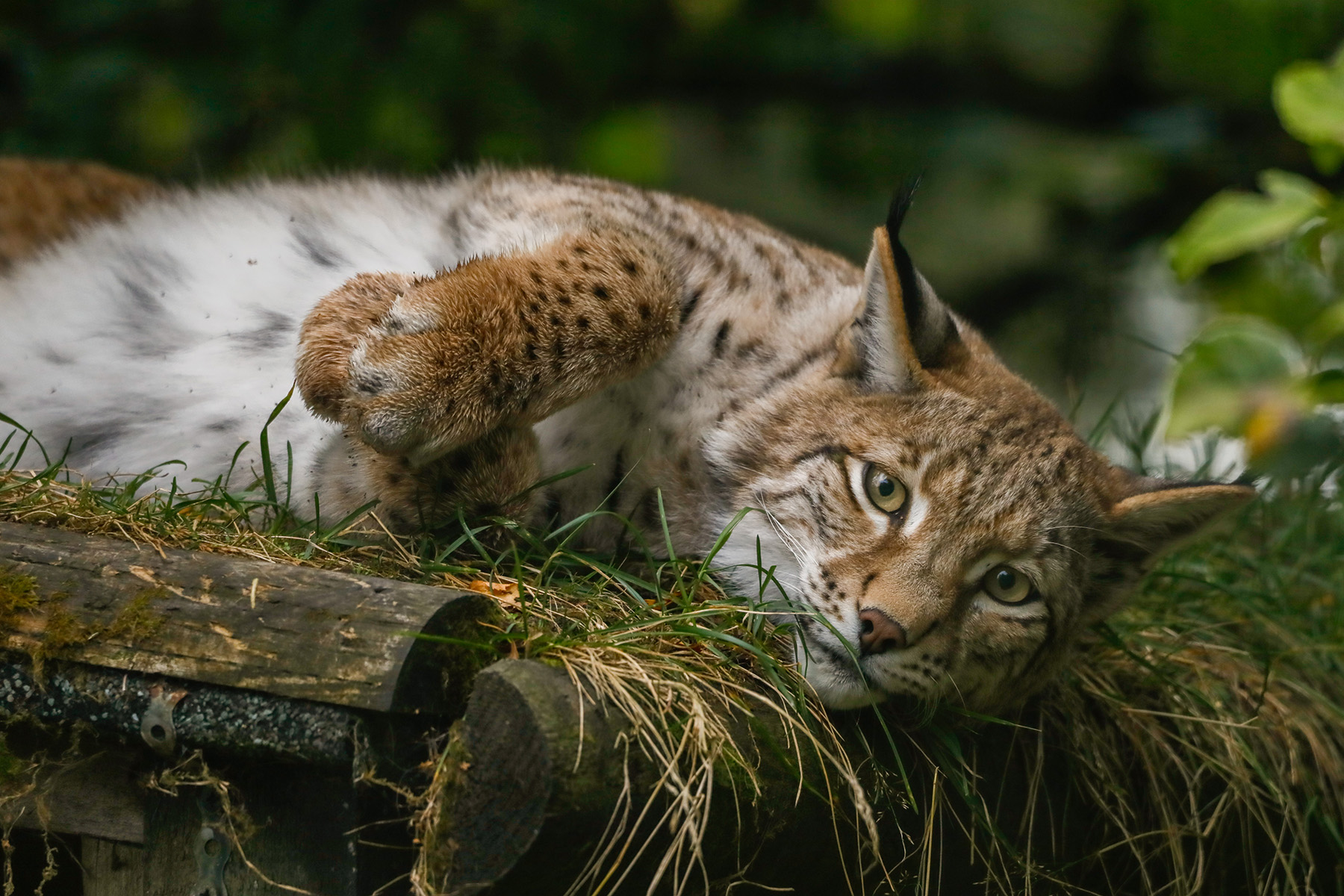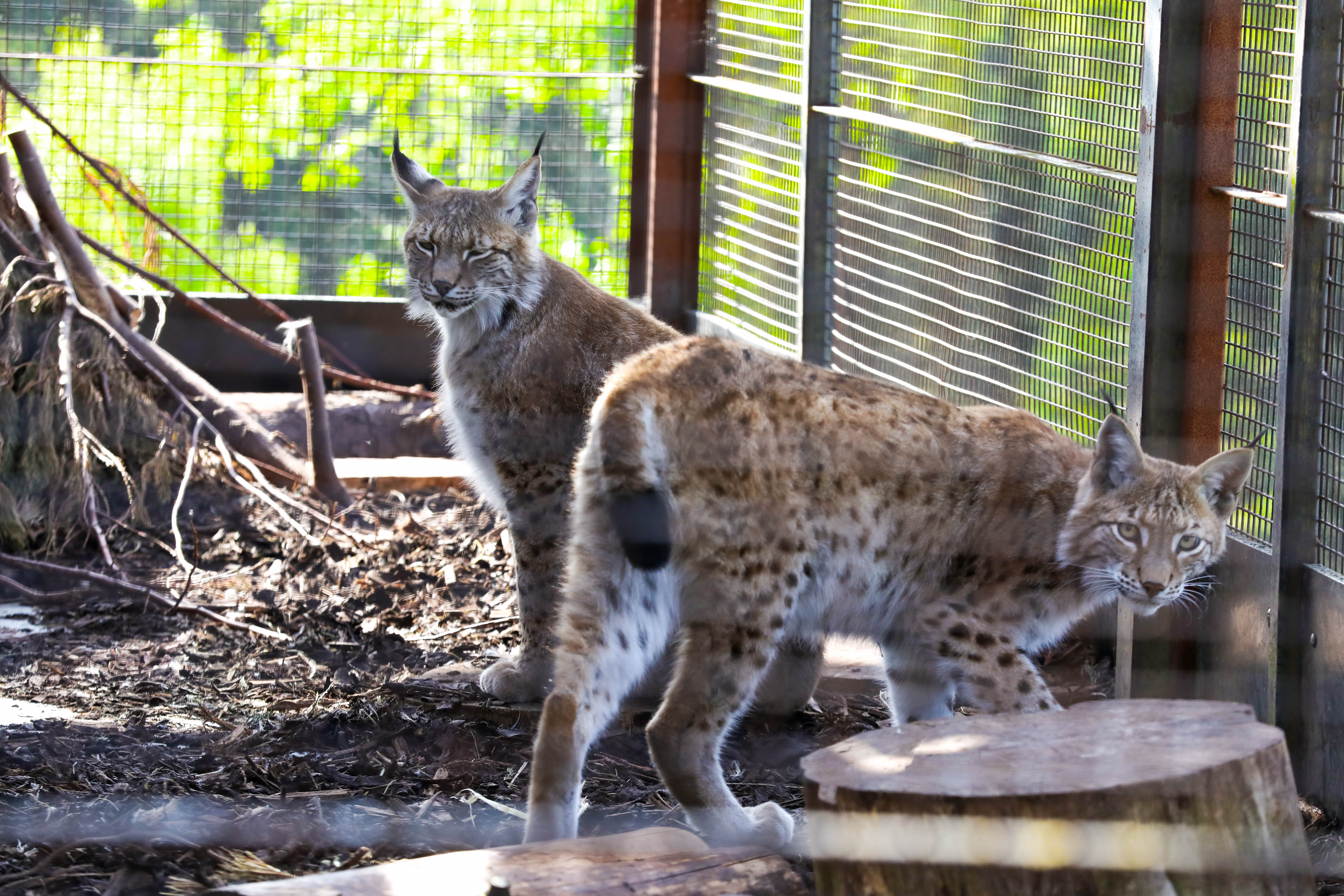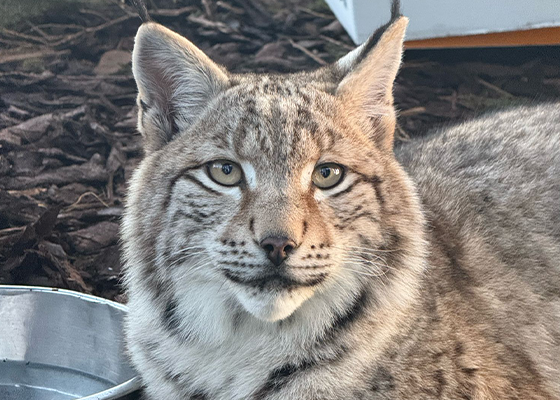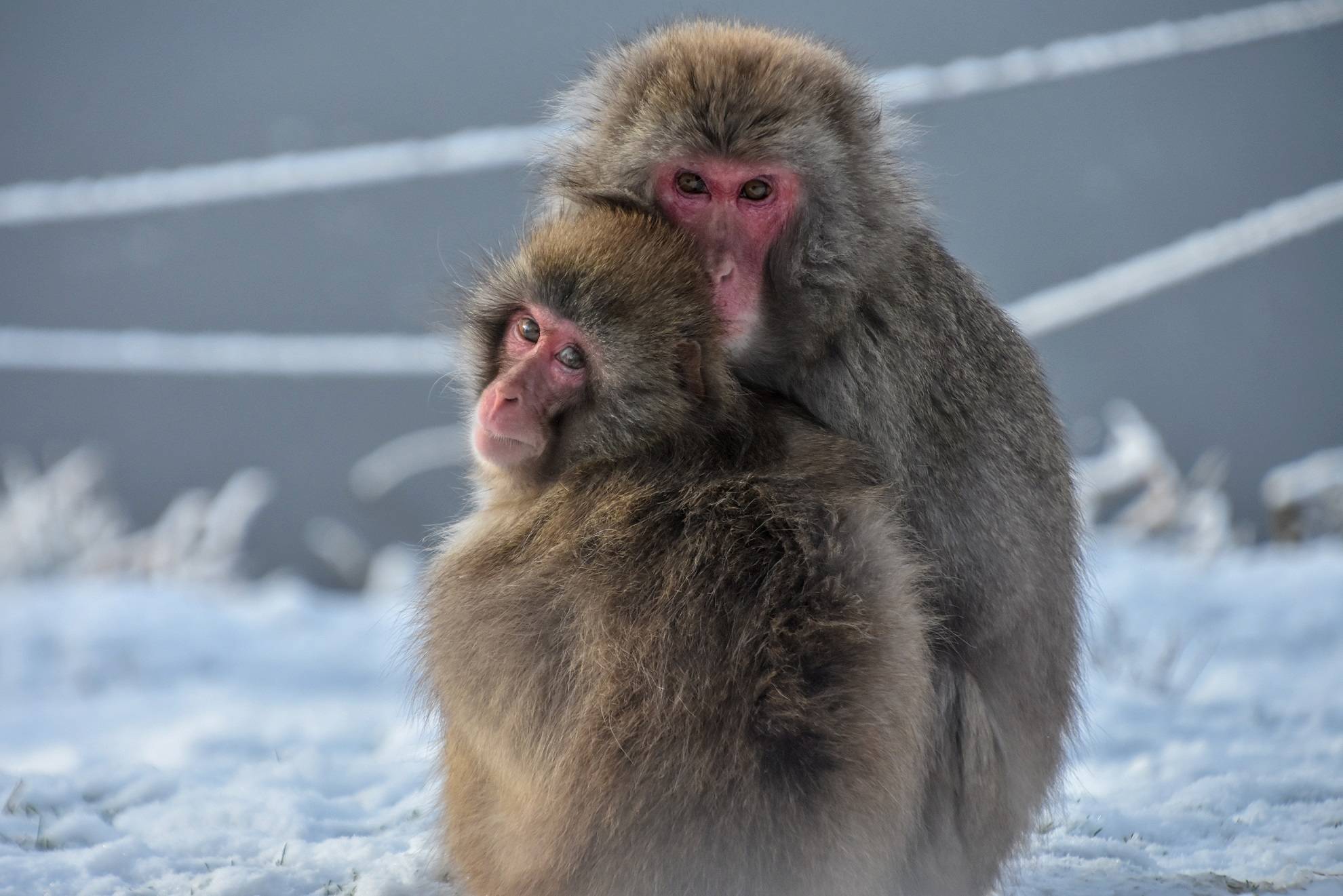Eurasian lynx
Lynx Lynx

We are home to three Eurasian lynx at the park - Caledonia, Cardrona and Bluebell.
In January 2025, they were abandoned in the Cairngorms National Park on a few miles from our park. The trio were rescued by the Royal Zoological Society of Scotland (RZSS). They received expert care at Edinburgh Zoo, which the wildlife conservation charity runs. After care and quarantine, they moved into their new home here at the park, only miles from where they were found.
All three lynx have curious personalities. They love playing together, especially with balls and other toys, and napping in the sun.
The Eurasian lynx is the largest of the four lynx species, native to forests across Europe and Asia. They live in diverse environments, inhabiting boreal forests, mountainous regions and rocky areas. They are masters of stealth capable of hunting deer and similar hoofed mammals, as well as smaller animals like hares and birds.
Eurasian lynx have been extinct in Scotland for around 1,300 years. They are still found in the wild across Eurasia and have a conservation status of Least Concern. Yet, many of their isolated subpopulations in Europe are under threat.
Population
Stable
Diet
Carnivore
Habitat
Forest
Fact file
They have distinctive dark tufts on their ears, which are thought to act a bit like antennae in helping to locate prey using their excellent hearing
Lynx are powerful, stealthy hunters and rely on short bursts of speed to catch prey in a surprise, explosive attack
Eurasian lynx are one of the widest ranging feline species in the world, found in the forests of western Europe, Russia and central Asia
Their large, fur-covered paws act like natural snowshoes, allowing them to walk on deep snow
Each Eurasian lynx has a unique spot pattern on its coat, much like a human fingerprint
Latest news
View all news
28 Oct 2025
Two minute read

02 Jul 2025
Three minute read

16 May 2025
Two minute read

How we're helping
Like all the animals in our care, our lynx are amazing ambassadors for their relatives in the wild and help hundreds of thousands of people connect with nature every year. They encourage visitors to learn about the threats facing wildlife and the action they can take to help create a world where nature is protected, valued, and loved.
As a wildlife conservation charity, we care for the animals here at the park and work to protect species at risk around the world. From providing expertise in genetics and veterinary health to protecting wild places with local conservation partners, and even restoring threatened species to the wild, we are active where we are needed most.
Find out more about RZSS conservation
